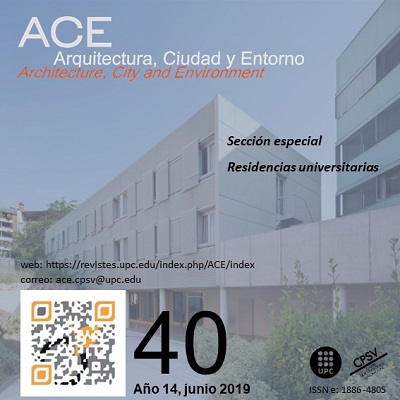Employing biomimicry in urban metamorphosis seeking for sustainability: case studies
DOI:
https://doi.org/10.5821/ace.14.40.6460Keywords:
Biomimicry, Sustainability, Urban Metamorphosis, Human InstinctsAbstract
Objective
The current study has aimed to develop the framework of biomimicry involvement in urban metamorphosis for sustainability. This research has engaged four objectives to achieve the aim. Objective one is to explore the rudiment interaction between human and nature through interrogating history, nature’s design. Objective two is to excavate the biomimicry in emulating nature’s genius. Objective three is to investigate the association between biomimicry and sustainable development, focusing on architectural features. Objective four is to develop the framework based on the biomimicry rules for human evolution and survival in the natural environment.
Methodology
To achieve objective one, the grounded theory method was applied for scrutinizing human development and human awareness about their natural environment. To achieve objective two, an evidence study was conducted on the biomimicry emulation of nature’s genius. To achieve objective three, a critical literature review was conducted using content analysis method to identify the biomimicry focus and architectural features. Through matrix development method, the focus and architectural features were tabulated. To achieve objective four, the waterfall framework design method and case studies were conducted to plot this framework.
Conclusions
This research gained a better understanding of biomimicry-based on theories of the evolution of organisms, including humans in the urban context, as measurement against sustainable benchmarks. It followed the paths of ecological researcher and urban philosophers, such as Freya Mathews and Moore, by re-versioned the human relationship with nature and the surrounding environment and observing human actions and development about life principles. In particular, the research found out that biomimicry is an approach that recently becomes the focus of many researchers of different disciplines seeking a solution for human problems.
The biomimicry has been merged with sustainable architecture design through specific features; included, form and function, geometry, metaphor, movement, material, pattern, proportion, sustainability, and technology. Furthermore, biomimicry is an approach that involves nature as a model, mentor, and measure for inspiration, which converges law, principles, and strategies in the context of biomimicry-based on human evolution.
Originality
The findings allowed architects and urban designers to enhance people’s awareness of their natural environment and provide a better perception of biomimicry in the application of human world, whether founded because of base instinct or a strategic view derived from the life’s principles.
Published
Issue
Section
License
| INTELECTUAL PROTECTION CRITERIA |
At this moment, it is count with the "Oficina Española de Patentes y Marcas", while global protection it is being processed by the World Intelectual Property Organization (OMPI/WIPO). Nevertheless the International Standard Serial Number Office (ISSN) has given the following numbers ISSN: 1886-4805 (electronic version) and 1887-7052 (paper version). All articles will be peer reviewed, using double blind reviewing. |
| COPYRIGHT |
The article contents and their comments are authors exclusive liability, and do not reflect necessarily the journal editor commitee's opinion. All ACE published works are subject to the following licence CC BY-NC-ND 3.0 ES http://creativecommons.org/licenses/by-nc-nd/3.0/es/ It implies that authors do not hold nor retain the copyright without restrictions but only those included in the licence. |





































